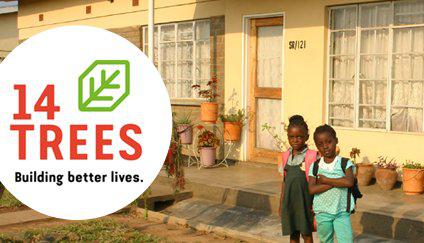The Affordable Housing program was launched in the mid-2000s. Unlike earlier corporate social responsibility efforts on the issue, the new program had a strong commercial focus. The program identified two main focus areas: sustainable construction and affordable housing. In 2011, the Executive Committee approved the business plan for the Affordable Housing program, which laid out clear revenue expectations and a payback period, and agreed to launch it in five countries.
Since 2011, the program has been rolled out to 24 countries and has:
• Provided technical assistance for house design and trained builders;
• Found solutions to distributing building materials to rural and other hard-to-reach communities and slums;
• Developed new construction solutions, such as Durabric (a non-fired earth and cement brick that reduces construction costs, is more resistant, and results in significantly fewer emissions than a traditional clay brick).
Social value
The social impact is broad—creating access to housing, lowering the cost of housing options, building the skills of local people and making them more employable, lifting the quality and safety of construction, and supporting access to finance for homes.
In 2015, LafargeHolcim had Affordable Housing projects in 24 countries and benefitting an estimated 440,000 people. Through partnerships with microfinance organizations, 16,000 microfinance loans have also been provided.
Commercial value
In 2015, the Affordable Housing program was profitable for the third year running and generated an additional EBITDA of CHF 15 million. In the process, LafargeHolcim has developed several partnerships based on its operational know-how and experience in the construction sector. These partnerships have resulted in flow-on commercial opportunities and revenue streams.
Investor view
In 2012, LafargeHolcim presented the program to investors to demonstrate its strong focus on innovation. The company clearly defined the expected payback and social benefits upfront and investors provided positive feedback. Finding additional resources to accelerate market penetration has been the main challenge in further developing the Affordable Housing program.
LafargeHolcim initiated a well-planned series of discussions with a range of investors and highlighted the strong social and financial value achieved by the program. These discussions mobilized investor support for the program and led to the creation of “14Trees” by LafargeHolcim in 2016. This new joint venture launched with CDC Group, the UK’s development finance institution, has a capital of CHF 10 million (CHF 5 million from CDC Group and CHF 5 million from LafargeHolcim) and aims to accelerate the production and commercialization of Durabric, which saves up to 14 trees per house built. Since 2013, more than 3 million of these bricks have been produced in Malawi and used in some 500 buildings. “14Trees” also aims to bring innovative building solutions to market, reducing construction costs by nearly 25% compared to traditional solutions.
Challenges & learnings
As with many other social impact initiatives, the Affordable Housing program was challenged in its early phase and perceived as CSR or corporate philanthropy. To overcome this challenge, the program had to frame the business case clearly—in terms of expected revenues and positive social impact conditions—and get buy-in from executive management.
Risks also need to be understood clearly and managed well. The risks for target groups at the base of the economic pyramid are different from those in mature markets (for example, higher volatility of local currency, lack of housing financing and poor repayment rates, and poor land titling). Without strong support from management, clear targets and objectives (such as 50 million people benefitting from the company’s initiatives by 2030), and a robust communication plan, the initiative could not have been successful and replicated.
This case study was first published in "Quantification Matters - How to Mobilize Finance for Social Impact", a report authored by the participants of the WBCSD Leadership Program 2016.
For more information on Affordable Housing, visit the Affordable Housing Hub.


